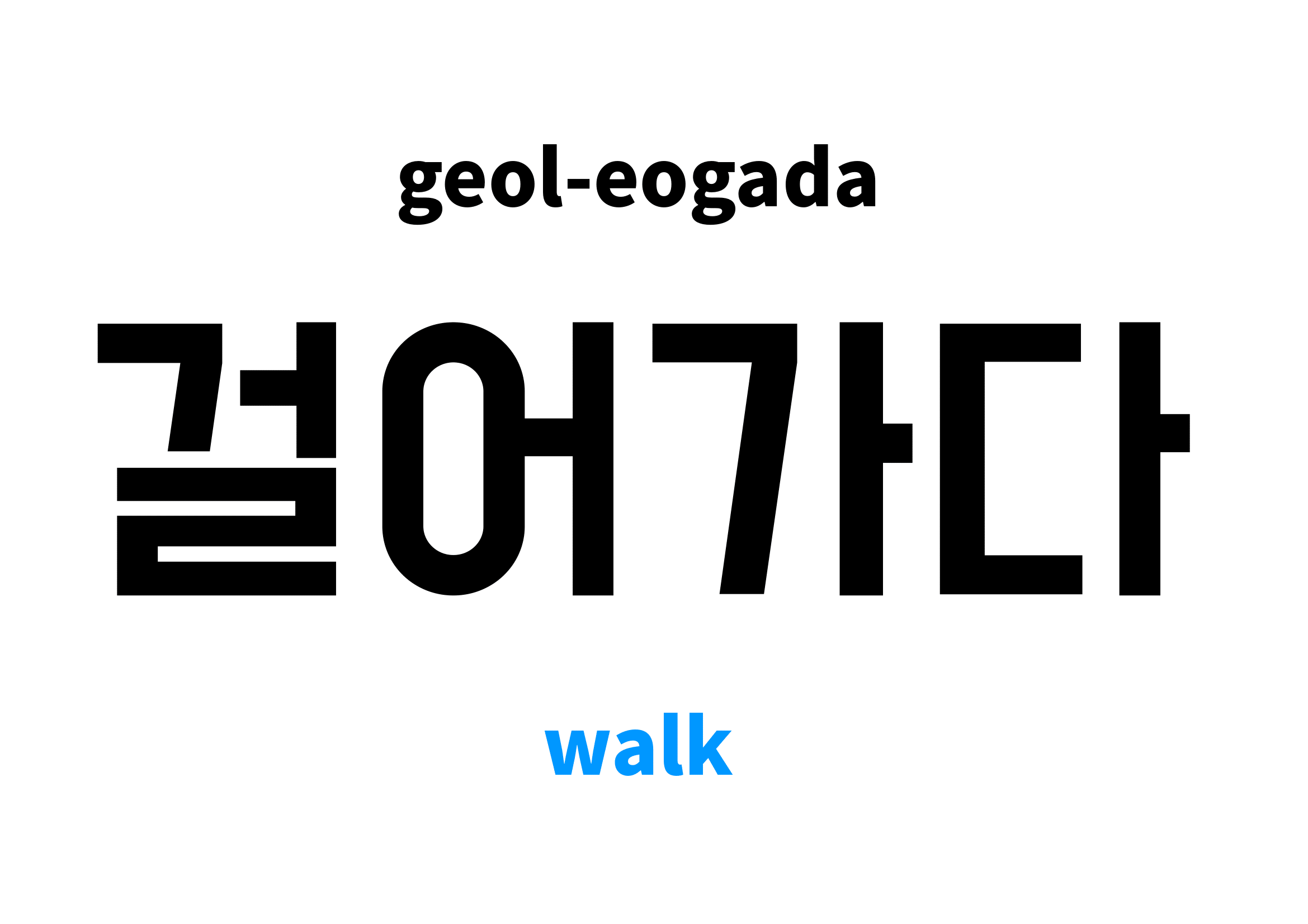 Walk in Korean is 걸어가다. For examples, you can use like [그쪽으로 걸어가다, 앞으로 걸어가다]. In this post you will learn how to pronounce and use 걸어가다 along with examples.
Walk in Korean is 걸어가다. For examples, you can use like [그쪽으로 걸어가다, 앞으로 걸어가다]. In this post you will learn how to pronounce and use 걸어가다 along with examples.
Basics
| Word | Part | Chinese | Sound |
| 걸어가다 | verb | — | 거러가다 |
걸어가다 Meaning
| Meaning | Explanation |
| walk; tread; stride | To take a step forward in the direction of a destination. |
Examples
| 그쪽으로 걸어가다. |
| walk towards it |
| 앞으로 걸어가다. |
| walk forward |
| 선배는 뚜벅뚜벅 박 선생님의 방으로 걸어가 문을 두드렸다. |
| The senior walked to Teacher Park’s room and knocked on the door. |
| 환경도 보호하고 운동도 할 겸 차는 집에 두고 회사에 걸어가기로 했다. |
| In order to protect the environment and exercise, we decided to leave the car at home and walk to work. |
How to Conjugate 걸어가다
① Formal High (합니다체)
| Present |  걸어갑니다 걸어갑니다 |
| Past |  걸어갔습니다 걸어갔습니다 |
| Past Perfect |  걸어갔었습니다 걸어갔었습니다 |
| Future |  걸어갈 것입니다 걸어갈 것입니다 |
| Condition |  걸어가겠습니다 걸어가겠습니다 |
② Informal High (해요체)
| Present |  걸어가요 걸어가요 |
| Past |  걸어갔어요 걸어갔어요 |
| Past Perfect |  걸어갔었어요 걸어갔었어요 |
| Future |  걸어갈 것이에요 걸어갈 것이에요 |
| Condition |  걸어가겠어요 걸어가겠어요 |
③ Informal Low (해체)
| Present |  걸어가 걸어가 |
| Past |  걸어갔어 걸어갔어 |
| Past Perfect |  걸어갔었어 걸어갔었어 |
| Future |  걸어갈 것이야 걸어갈 것이야 |
| Condition |  걸어가겠어 걸어가겠어 |
④ Formal Low (한다체)
| Present |  걸어간다 걸어간다 |
| Past |  걸어갔다 걸어갔다 |
| Past Perfect |  걸어갔었다 걸어갔었다 |
| Future |  걸어갈 것이다 걸어갈 것이다 |
| Condition |  걸어가겠다 걸어가겠다 |

Comments